 Although this story by Ivo Andrić describes the building of a famous Bosnian bridge, it is more about the two men responsible for its construction: a Grand Vizier who had recently emerged victorious from banishment and commissioned it as a tribute to his birthplace, and the meticulous master builder who completed it. Although the Grand Vizier was one of the most powerful men in the Ottoman Empire, the banishment experience had left him so insecure and isolated that he suffered delusions and decision-making paralysis. Themes include dedication, creative anxiety, political intrigue, isolation, fear, the transience of life and happiness. More…
Although this story by Ivo Andrić describes the building of a famous Bosnian bridge, it is more about the two men responsible for its construction: a Grand Vizier who had recently emerged victorious from banishment and commissioned it as a tribute to his birthplace, and the meticulous master builder who completed it. Although the Grand Vizier was one of the most powerful men in the Ottoman Empire, the banishment experience had left him so insecure and isolated that he suffered delusions and decision-making paralysis. Themes include dedication, creative anxiety, political intrigue, isolation, fear, the transience of life and happiness. More…
Category Archives: Short Stories
The Catbird Seat
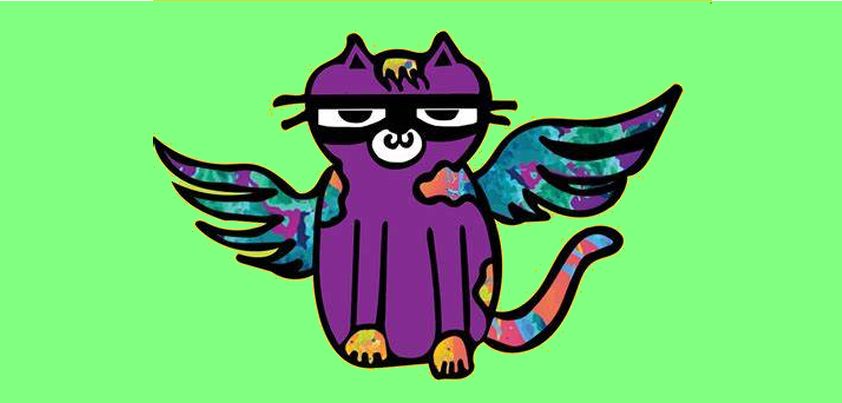 Set in 1940s New York, this story by James Thurber is a not-so-gentle satire of the lengths to which desperate people will go to resist change. A meek, solitary man believes the brash efficiency expert brought in to streamline his employer’s workflows threatens his job and must be “rubbed out”. He plans what he considers an almost perfect murder, only to be thwarted at the last moment by lack of a weapon. Fortunately, in a moment of inspiration, he turns the tables and puts himself in the “Catbird Seat”. Themes: workplace gender stereotypes, alienation, change, insecurity, desperation, revenge. More…
Set in 1940s New York, this story by James Thurber is a not-so-gentle satire of the lengths to which desperate people will go to resist change. A meek, solitary man believes the brash efficiency expert brought in to streamline his employer’s workflows threatens his job and must be “rubbed out”. He plans what he considers an almost perfect murder, only to be thwarted at the last moment by lack of a weapon. Fortunately, in a moment of inspiration, he turns the tables and puts himself in the “Catbird Seat”. Themes: workplace gender stereotypes, alienation, change, insecurity, desperation, revenge. More…
The Ultimate Safari
 Set during the Mozambican Civil War, this story from Nadine Gordimer follows a family as they undertake an arduous journey to a South African refugee camp through Kruger Park. The story is told through the eyes of a nine year-old girl who understands little about the war other than that her father is away fighting for the government. Following her mother’s disappearance while buying cooking oil, the rest of her family join a group of other displaced villagers for the dangerous 40-mile (65 km) trek through the park. Themes include family, war, loss, lawlessness, displacement, fear, endurance, hope. More…
Set during the Mozambican Civil War, this story from Nadine Gordimer follows a family as they undertake an arduous journey to a South African refugee camp through Kruger Park. The story is told through the eyes of a nine year-old girl who understands little about the war other than that her father is away fighting for the government. Following her mother’s disappearance while buying cooking oil, the rest of her family join a group of other displaced villagers for the dangerous 40-mile (65 km) trek through the park. Themes include family, war, loss, lawlessness, displacement, fear, endurance, hope. More…
Snow
 Although this Alice Adams story has little action, a lot is achieved. A middle-aged man initially questions his decision to create a “diversion” for his first meeting with his daughter’s lesbian lover in the form of a weekend skiing trip with his girlfriend. Talking in their isolated cabin that night, the three women reveal things about themselves that not only bring the man closer to his daughter and girlfriend, but also help him understand his initial feelings (jealousy) toward his daughter’s partner. Themes include fatherhood, sexuality, deception, sexual assault, teenage pregnancy, jealousy, love. More…
Although this Alice Adams story has little action, a lot is achieved. A middle-aged man initially questions his decision to create a “diversion” for his first meeting with his daughter’s lesbian lover in the form of a weekend skiing trip with his girlfriend. Talking in their isolated cabin that night, the three women reveal things about themselves that not only bring the man closer to his daughter and girlfriend, but also help him understand his initial feelings (jealousy) toward his daughter’s partner. Themes include fatherhood, sexuality, deception, sexual assault, teenage pregnancy, jealousy, love. More…
The Garden of Forking Paths
 The themes of this story from Jorge Borges are order vs. disorder, time, and sacrifice. An ancient Chinese scholar gave up everything to write a book and create a labyrinth. No one could understand the book or find the labyrinth until a modern day sinologist solved the mystery. The book is the labyrinth; it argues that time is not linear, but a starting point for an infinite number of paths. A descendant of the scholar murders the sinologist. This has nothing to do with the book, but rather a cause he doesn’t believe in. More…
The themes of this story from Jorge Borges are order vs. disorder, time, and sacrifice. An ancient Chinese scholar gave up everything to write a book and create a labyrinth. No one could understand the book or find the labyrinth until a modern day sinologist solved the mystery. The book is the labyrinth; it argues that time is not linear, but a starting point for an infinite number of paths. A descendant of the scholar murders the sinologist. This has nothing to do with the book, but rather a cause he doesn’t believe in. More…
How I Contemplated the World from the Detroit House of Correction and Began My Life Over Again
 The experimental style of this Joyce Carol Oates story takes a little getting used to. In the form of a disorganized set of notes for an English writing assignment, a sixteen-year-old girl reviews the events that landed her in government care. Starved of affection by her wealthy parents, her acts of rebellion escalate from shoplifting to running away from home and falling under the spell of a prostitute and her Svengali-like, drug-addicted pimp. Sadly, the House of Correction isn’t the sanctuary she thought it would be. Themes parental neglect, rebellion, human trafficking, drug use, class and racial conflict. More…
The experimental style of this Joyce Carol Oates story takes a little getting used to. In the form of a disorganized set of notes for an English writing assignment, a sixteen-year-old girl reviews the events that landed her in government care. Starved of affection by her wealthy parents, her acts of rebellion escalate from shoplifting to running away from home and falling under the spell of a prostitute and her Svengali-like, drug-addicted pimp. Sadly, the House of Correction isn’t the sanctuary she thought it would be. Themes parental neglect, rebellion, human trafficking, drug use, class and racial conflict. More…
Killings
 At a simplistic level this provocative story by Andre Dubus suggests that, given the right circumstances, almost anyone could become a cold-blooded killer. On one hand we have Strout (aggressive, violent and possibly psychologically disturbed); on the other, Matt (a peaceful, model citizen). Matt’s wife suffers untold emotional pain as she regularly encounters Strout (their son’s murderer) while he walks around town on bail. Rather than wait for the trial, Matt and his redneck friend Willis make elaborate plans for a killing of their own. Themes: love/marriage, murder, grief, justice, revenge, morality. More…
At a simplistic level this provocative story by Andre Dubus suggests that, given the right circumstances, almost anyone could become a cold-blooded killer. On one hand we have Strout (aggressive, violent and possibly psychologically disturbed); on the other, Matt (a peaceful, model citizen). Matt’s wife suffers untold emotional pain as she regularly encounters Strout (their son’s murderer) while he walks around town on bail. Rather than wait for the trial, Matt and his redneck friend Willis make elaborate plans for a killing of their own. Themes: love/marriage, murder, grief, justice, revenge, morality. More…
A Father-To-Be
 In this playful story by Saul Bellow, a successful scientist in an illuminated state of mind makes his way to have dinner with his fiancée. As he contemplates fellow passengers on the subway, he is shocked to notice the resemblance between his future wife and the “flat-looking dandy of respectability” sitting next to him. He begins to wonder what her children will look like, and is so disturbed by the thought he decides to end the relationship. Fortunately, her soothing hands erase the memory. Themes include “duty”, financial stress, pride, self-discovery, appearance, heredity, self-delusion, submissiveness. More…
In this playful story by Saul Bellow, a successful scientist in an illuminated state of mind makes his way to have dinner with his fiancée. As he contemplates fellow passengers on the subway, he is shocked to notice the resemblance between his future wife and the “flat-looking dandy of respectability” sitting next to him. He begins to wonder what her children will look like, and is so disturbed by the thought he decides to end the relationship. Fortunately, her soothing hands erase the memory. Themes include “duty”, financial stress, pride, self-discovery, appearance, heredity, self-delusion, submissiveness. More…
Separating
 Marriage break-ups, especially where children are involved, can be stressful for all concerned. John Updike’s Separating is written from a self-absorbed husband/father’s point of view. Ironically, despite Richard’s inferred infidelity, Updike reverses traditional gender roles by painting him as the weepy, emotional victim and his wife Joan as the heartless, unforgiving partner pushing for separation. The children demonstrate varying levels of understanding and acceptance. Older son Dickie’s “romantic” kiss highlights the confusion among them, and Richard’s shallowness finally shows through in his inability to answer Dickie’s obvious question. Themes: family, marriage, separation, anguish, guilt, confusion, regret. More…
Marriage break-ups, especially where children are involved, can be stressful for all concerned. John Updike’s Separating is written from a self-absorbed husband/father’s point of view. Ironically, despite Richard’s inferred infidelity, Updike reverses traditional gender roles by painting him as the weepy, emotional victim and his wife Joan as the heartless, unforgiving partner pushing for separation. The children demonstrate varying levels of understanding and acceptance. Older son Dickie’s “romantic” kiss highlights the confusion among them, and Richard’s shallowness finally shows through in his inability to answer Dickie’s obvious question. Themes: family, marriage, separation, anguish, guilt, confusion, regret. More…
The Zulu and the Zeide
 In this touching story by Dan Jacobson, a South African businessman is resentful towards his senile Jewish father for the embarrassment he causes and his many failings in life. As a cruel joke, he employs a “raw” Zulu from the countryside to keep his father out of trouble. Despite the language barriers, the Zulu does such a good job that a camaraderie develops between them and the old man begins to depend upon him. The infuriated son responds by humiliating the Zulu. Themes include aging and dependency, family, duty, humanity and compassion, jealousy, social class, racism, guilt. More…
In this touching story by Dan Jacobson, a South African businessman is resentful towards his senile Jewish father for the embarrassment he causes and his many failings in life. As a cruel joke, he employs a “raw” Zulu from the countryside to keep his father out of trouble. Despite the language barriers, the Zulu does such a good job that a camaraderie develops between them and the old man begins to depend upon him. The infuriated son responds by humiliating the Zulu. Themes include aging and dependency, family, duty, humanity and compassion, jealousy, social class, racism, guilt. More…
The Landlady
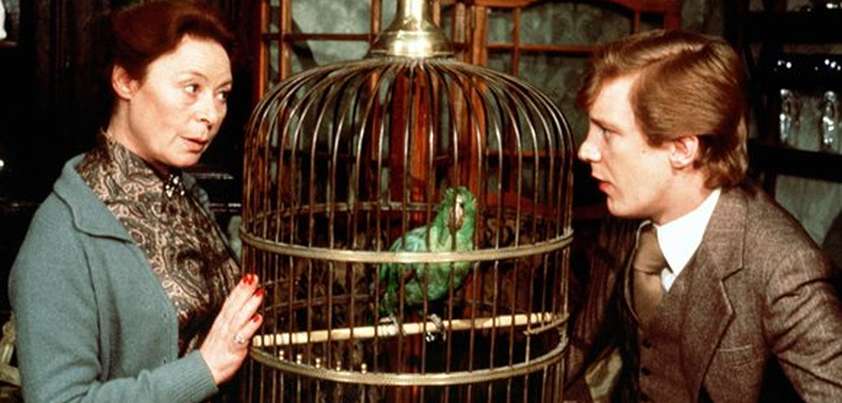 The theme of this Roald Dahl story is the commonly adopted things aren’t always as they seem. What sets it apart is the way Dahl gradually builds tension, starting with his descriptions of the weather and outdoor setting, then moving on to the supernatural before young Billy even meets the “motherly” landlady. (Each word was like a large black eye staring at him through the glass, holding him …) From then on, almost every step involves dramatic irony. The reader can see that something is wrong, which softens the impact of the horror ending, but naïve Billy remains frustratingly oblivious. More…
The theme of this Roald Dahl story is the commonly adopted things aren’t always as they seem. What sets it apart is the way Dahl gradually builds tension, starting with his descriptions of the weather and outdoor setting, then moving on to the supernatural before young Billy even meets the “motherly” landlady. (Each word was like a large black eye staring at him through the glass, holding him …) From then on, almost every step involves dramatic irony. The reader can see that something is wrong, which softens the impact of the horror ending, but naïve Billy remains frustratingly oblivious. More…
Stone Mattress
 From the opening line of this Margaret Atwood story (At the outset Verna had not intended to kill anyone), we know someone will die. An woman who has become wealthy by helping four elderly husbands depart not only happy but grateful, if a little sooner than might have been expected, treats herself to an arctic cruise. Everything changes at the pre-cruise meet-and-greet, when she recognizes a man who had brutally raped her fifty years earlier. He doesn’t recognize her, and she begins to plot the perfect murder. Themes include rape, self-righteousness, resilience, seduction and manipulation, anger, violence, revenge, aging. More…
From the opening line of this Margaret Atwood story (At the outset Verna had not intended to kill anyone), we know someone will die. An woman who has become wealthy by helping four elderly husbands depart not only happy but grateful, if a little sooner than might have been expected, treats herself to an arctic cruise. Everything changes at the pre-cruise meet-and-greet, when she recognizes a man who had brutally raped her fifty years earlier. He doesn’t recognize her, and she begins to plot the perfect murder. Themes include rape, self-righteousness, resilience, seduction and manipulation, anger, violence, revenge, aging. More…
The House Opposite
 In this story by R. K. Narayan, an Indian “hermit” is both offended and titillated by the activities of a prostitute living opposite. His initial reaction is to label her a “monstrous” devil. However, imagining what she does night after night excites him to the point of obsession. There is a double irony here. The hermit, who has supposedly given up all pleasures, is consumed by desire. The prostitute, who regards him as a saint, respectfully seeks his blessing. It is not until this request that the hermit recognizes the woman’s humanity. Themes include spirituality, desire, self-righteousness, judging others, humanity. More…
In this story by R. K. Narayan, an Indian “hermit” is both offended and titillated by the activities of a prostitute living opposite. His initial reaction is to label her a “monstrous” devil. However, imagining what she does night after night excites him to the point of obsession. There is a double irony here. The hermit, who has supposedly given up all pleasures, is consumed by desire. The prostitute, who regards him as a saint, respectfully seeks his blessing. It is not until this request that the hermit recognizes the woman’s humanity. Themes include spirituality, desire, self-righteousness, judging others, humanity. More…
Bliss
 In this story from Katherine Mansfield, a thirty-year-old wife and mother who marvels at her joyful, upper middle-class life learns the meaning of the proverb ignorance is bliss. Throughout the story, which takes place over a single day, she seeks to identify the source of her happiness. Over dinner with some artistic friends, there is an indication that it may be linked to a new friendship with a female guest. Strangely, this results in her first ever strong sexual desire for her husband. Alas, her lust and bliss are soon shattered. Themes: happiness, modernity, sexuality and desire, deception, adultery. More…
In this story from Katherine Mansfield, a thirty-year-old wife and mother who marvels at her joyful, upper middle-class life learns the meaning of the proverb ignorance is bliss. Throughout the story, which takes place over a single day, she seeks to identify the source of her happiness. Over dinner with some artistic friends, there is an indication that it may be linked to a new friendship with a female guest. Strangely, this results in her first ever strong sexual desire for her husband. Alas, her lust and bliss are soon shattered. Themes: happiness, modernity, sexuality and desire, deception, adultery. More…
‘If I Forget Thee, Oh Earth…’
 This coming of age story by Arthur C. Clarke carries a familiar theme for 1950s/1960s science fiction: the prospect of Earth being rendered uninhabitable due to nuclear conflict, and humankind existing only in isolated settlements throughout space. Here, a man takes his ten-year-old son on his first trip outside the protective dome of a moon colony. The boy’s wonder at seeing stars for the first time soon fades as he observes the glowing, radiated Earth and realizes that his generation will never be able to return. Other themes include isolation, survival, self-sufficiency, misused technology, legacy, hope. More…
This coming of age story by Arthur C. Clarke carries a familiar theme for 1950s/1960s science fiction: the prospect of Earth being rendered uninhabitable due to nuclear conflict, and humankind existing only in isolated settlements throughout space. Here, a man takes his ten-year-old son on his first trip outside the protective dome of a moon colony. The boy’s wonder at seeing stars for the first time soon fades as he observes the glowing, radiated Earth and realizes that his generation will never be able to return. Other themes include isolation, survival, self-sufficiency, misused technology, legacy, hope. More…
There is a Reaper
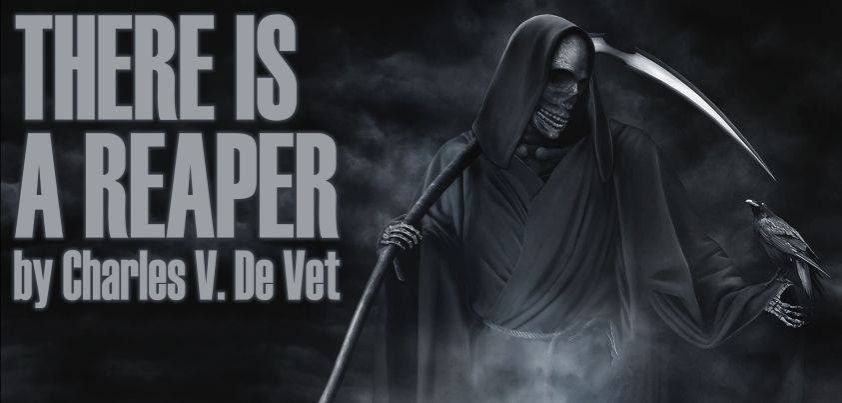 The English idiom ‘Grim Reaper’ refers to either death itself, or the Angel of Death who comes to collect a soul when someone dies. This story by Charles de Vet begins with the following words: Doctors had given him just one month to live. A month to wonder, what comes afterward? There was one way to find out – ask a dead man! The question had to be asked within a few minutes of death, so he decided the only thing to do was murder someone. The murdered man’s frightening answer was not what he had expected. More…
The English idiom ‘Grim Reaper’ refers to either death itself, or the Angel of Death who comes to collect a soul when someone dies. This story by Charles de Vet begins with the following words: Doctors had given him just one month to live. A month to wonder, what comes afterward? There was one way to find out – ask a dead man! The question had to be asked within a few minutes of death, so he decided the only thing to do was murder someone. The murdered man’s frightening answer was not what he had expected. More…
The Sea Beyond
 This story by N. V. M. Gonzalez describes a journey on a Philippine passenger-cargo ship from a small port to its provincial capital. In addition to paying passengers, the ship is transporting a young cargardor (stevedore) who was critically injured during the loading of cargo to the capital for medical treatment. Tending him are his pregnant wife and her mother. Despite a supposed telegraph request for a doctor meet the ship on arrival, as the ship departs the capital they are left stranded on the dock with no sign of help. Themes include suffering, inhumanity, social class, superstition. More…
This story by N. V. M. Gonzalez describes a journey on a Philippine passenger-cargo ship from a small port to its provincial capital. In addition to paying passengers, the ship is transporting a young cargardor (stevedore) who was critically injured during the loading of cargo to the capital for medical treatment. Tending him are his pregnant wife and her mother. Despite a supposed telegraph request for a doctor meet the ship on arrival, as the ship departs the capital they are left stranded on the dock with no sign of help. Themes include suffering, inhumanity, social class, superstition. More…
The Distant Past
 In this story by William Trevor, Irish villagers ridicule an elderly brother and sister for living in the past by clinging to their family’s long-held British allegiance. Almost forty years have passed since the Anglo-Irish War. The rest of the community, who are predominantly Republican, have moved on. That is until “The Troubles” of the late 1960s, when the other villagers’ hatred and mistrust of the British resurfaces. The once well-liked siblings find themselves ostracized, proving that the past is never far away. Themes: family loyalty and pride, isolation, tolerance, friendship, religious/political conflict, alienation, the interrelationship between past and present. More…
In this story by William Trevor, Irish villagers ridicule an elderly brother and sister for living in the past by clinging to their family’s long-held British allegiance. Almost forty years have passed since the Anglo-Irish War. The rest of the community, who are predominantly Republican, have moved on. That is until “The Troubles” of the late 1960s, when the other villagers’ hatred and mistrust of the British resurfaces. The once well-liked siblings find themselves ostracized, proving that the past is never far away. Themes: family loyalty and pride, isolation, tolerance, friendship, religious/political conflict, alienation, the interrelationship between past and present. More…
The Man of the Crowd
 This story by Edgar Allan Poe opens with a man in high spirits after recovering from an illness sitting in a London coffee shop watching people go by in the street. He is absorbed in classifying them by occupation and social class until a “decrepid old man” with a fiendish expression unlike any he has seen before commands his attention. Curious, he follows the old man for twenty-four hours, learning nothing other than that he seems to want always to be part of a crowd. Themes include social class, obsession, curiosity, hidden secrets, urban alienation and loneliness. More…
This story by Edgar Allan Poe opens with a man in high spirits after recovering from an illness sitting in a London coffee shop watching people go by in the street. He is absorbed in classifying them by occupation and social class until a “decrepid old man” with a fiendish expression unlike any he has seen before commands his attention. Curious, he follows the old man for twenty-four hours, learning nothing other than that he seems to want always to be part of a crowd. Themes include social class, obsession, curiosity, hidden secrets, urban alienation and loneliness. More…
That Evening Sun (Go Down)
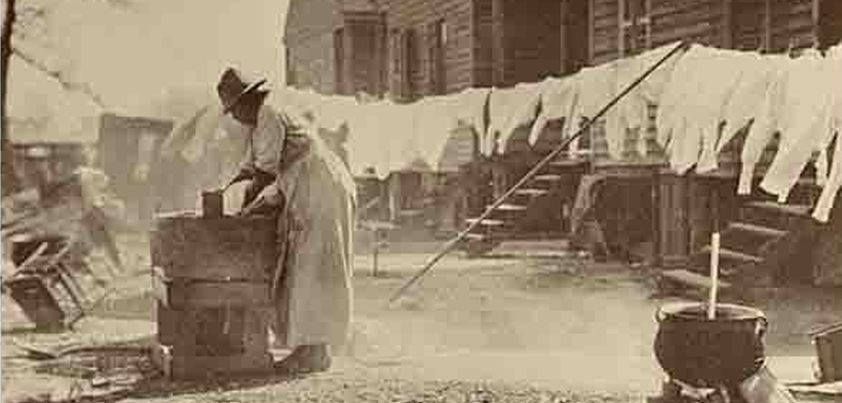 In this story by William Faulkner, a man recalls his parents’ callous indifference to the fate of an African-American woman who had washed the family’s clothes for many years. The woman makes extra money by allowing white men to “visit” her at home, and thinks her violent husband is planning to kill her for carrying a white man’s child. One night, she panics and tricks the family’s three children into staying with her. When their father takes them home, we are left wondering if she will survive the night. Themes: coming of age, racism, sexual exploitation, violence, fear, inhumanity. More…
In this story by William Faulkner, a man recalls his parents’ callous indifference to the fate of an African-American woman who had washed the family’s clothes for many years. The woman makes extra money by allowing white men to “visit” her at home, and thinks her violent husband is planning to kill her for carrying a white man’s child. One night, she panics and tricks the family’s three children into staying with her. When their father takes them home, we are left wondering if she will survive the night. Themes: coming of age, racism, sexual exploitation, violence, fear, inhumanity. More…
One Thousand Dollars
 The twist ending in this O. Henry story has most readers believing that, after receiving an inheritance of $1,000 from an uncle and canvassing various options, the protagonist sees the error of his spendthrift ways. He then tells his uncle’s ward, who he loves and was left very little, that the money was left to her. And later, despite his profession of love being rejected, he contrives for her to receive an additional $50,000 to which he becomes entitled. Is this a story of selfless sacrifice, or could there be a further twist? Themes include change, deception, selflessness, generosity, love. More…
The twist ending in this O. Henry story has most readers believing that, after receiving an inheritance of $1,000 from an uncle and canvassing various options, the protagonist sees the error of his spendthrift ways. He then tells his uncle’s ward, who he loves and was left very little, that the money was left to her. And later, despite his profession of love being rejected, he contrives for her to receive an additional $50,000 to which he becomes entitled. Is this a story of selfless sacrifice, or could there be a further twist? Themes include change, deception, selflessness, generosity, love. More…
City of Specters
 In 2013, North Korean writer Bandi reputedly smuggled seven stories, including this one, out of the country. Although unverified, the stories provide a valuable insight into the fear and repressed lives of North Korean citizens. In this one, ‘unpatriotic behavior’ by a two-year-old child results in banishment of a senior bureaucrat and his family to the countryside. Earlier, the child had suffered a fit in its mother’s arms. In most countries, she would call for a doctor. Here, we are told that had a doctor happened to be at hand, the incident might well have ended in disaster. More…
In 2013, North Korean writer Bandi reputedly smuggled seven stories, including this one, out of the country. Although unverified, the stories provide a valuable insight into the fear and repressed lives of North Korean citizens. In this one, ‘unpatriotic behavior’ by a two-year-old child results in banishment of a senior bureaucrat and his family to the countryside. Earlier, the child had suffered a fit in its mother’s arms. In most countries, she would call for a doctor. Here, we are told that had a doctor happened to be at hand, the incident might well have ended in disaster. More…
Zero Hour
 This chilling story by Ray Bradbury involves an inattentive mother, a feisty seven-year-old girl, and her imaginary friend Drill. Throughout most of the story, the girl leads her friends in a construction game following instructions she receives from Drill. Her mother later learns that groups of children across America are playing the same game. Its name is “Invasion”, and for her the climax comes in a single word: Peekaboo. The major theme of the story is complacency. The mother senses something is wrong, but doesn’t act until too late. Other themes include human smugness (We’re impregnable!), childhood innocence/impressionability, manipulation, fear. More…
This chilling story by Ray Bradbury involves an inattentive mother, a feisty seven-year-old girl, and her imaginary friend Drill. Throughout most of the story, the girl leads her friends in a construction game following instructions she receives from Drill. Her mother later learns that groups of children across America are playing the same game. Its name is “Invasion”, and for her the climax comes in a single word: Peekaboo. The major theme of the story is complacency. The mother senses something is wrong, but doesn’t act until too late. Other themes include human smugness (We’re impregnable!), childhood innocence/impressionability, manipulation, fear. More…
Here’s Your Hat What’s Your Hurry
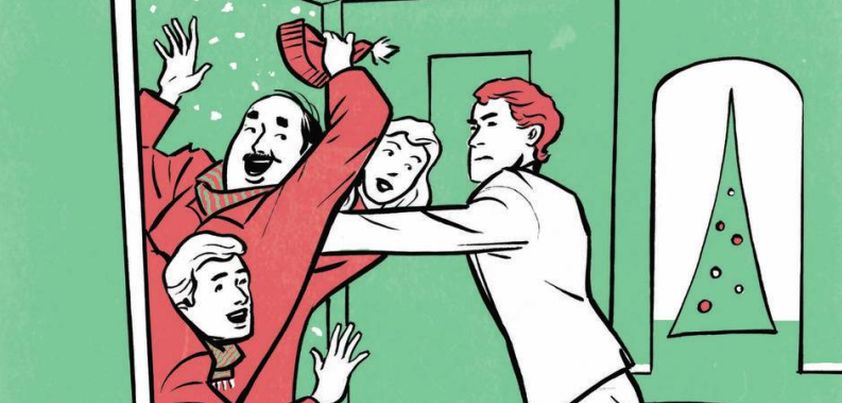 In this story by Elizabeth McCracken, a homeless woman with no family has spent her life traveling the countryside and staying at the homes of people she says are distant relatives. Now in her eighties, she visits a young couple claiming to be the niece of the man’s great-grandfather. While there, she forms an unlikely attachment to a neglected, undisciplined young boy living nearby. When the truth comes out and it is time for her to leave, she considers taking the boy with her. Themes include homelessness, deception, family, loss, connection. More…
In this story by Elizabeth McCracken, a homeless woman with no family has spent her life traveling the countryside and staying at the homes of people she says are distant relatives. Now in her eighties, she visits a young couple claiming to be the niece of the man’s great-grandfather. While there, she forms an unlikely attachment to a neglected, undisciplined young boy living nearby. When the truth comes out and it is time for her to leave, she considers taking the boy with her. Themes include homelessness, deception, family, loss, connection. More…
The Totara Tree
 This light-hearted story from Roderick Finlayson is set in 1930’s New Zealand. A small Maori community is in conflict with the Pakeha (white European) authorities who plan to cut down a sacred tree to build new power lines. An old woman climbs the tree and refuses to come down. After an initial confrontation, the authorities depart for the night. This leads to a drunken celebration, which causes a house-fire that threatens the tree. When rescuers discover that the old woman in the tree has died, one of them comes up with a foolproof plan to save the tree. More…
This light-hearted story from Roderick Finlayson is set in 1930’s New Zealand. A small Maori community is in conflict with the Pakeha (white European) authorities who plan to cut down a sacred tree to build new power lines. An old woman climbs the tree and refuses to come down. After an initial confrontation, the authorities depart for the night. This leads to a drunken celebration, which causes a house-fire that threatens the tree. When rescuers discover that the old woman in the tree has died, one of them comes up with a foolproof plan to save the tree. More…
A Night in the Hills
 This story from Paz Marquez Benitez deals with something many people caught up in a routine job or coming to a crossroads in life go through: dreaming of escape to an alternative, seemingly more appealing lifestyle. City-based Gerardo has always dreamed of living in the countryside. Recently widowed, he accompanies a friend to inspect some newly opened public land. After a single night in the jungle, he decides that life “in the hills” is not as appealing as he had imagined. Themes: imagination (the grass is always greener), city vs. country life, discontent, enlightenment, acceptance. More…
This story from Paz Marquez Benitez deals with something many people caught up in a routine job or coming to a crossroads in life go through: dreaming of escape to an alternative, seemingly more appealing lifestyle. City-based Gerardo has always dreamed of living in the countryside. Recently widowed, he accompanies a friend to inspect some newly opened public land. After a single night in the jungle, he decides that life “in the hills” is not as appealing as he had imagined. Themes: imagination (the grass is always greener), city vs. country life, discontent, enlightenment, acceptance. More…
The Decapitated Chicken
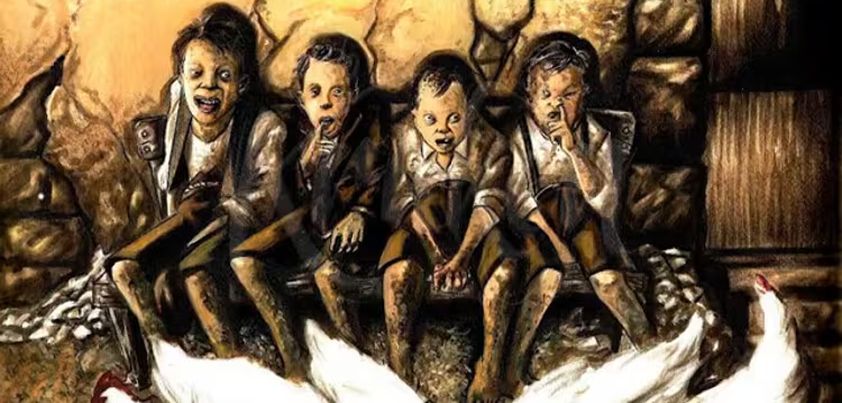 In this story by Horacio Quiroga a loving couple has four sons, each of whom soon degenerates into idiocy. The couple become bitter and resentful, each blaming the other for their sons’ congenital imbecility. When a daughter is born who does not share the condition, the parents ignore the boys, leaving them in the care of a servant who brutally mistreats them. One day the boys watch as the cook decapitates a chicken. Fascinated by the sight of blood, they later imitate the act with the only small ‘animal’ available. Themes include mental illness, despair, rejection and neglect, cruelty, violence. More…
In this story by Horacio Quiroga a loving couple has four sons, each of whom soon degenerates into idiocy. The couple become bitter and resentful, each blaming the other for their sons’ congenital imbecility. When a daughter is born who does not share the condition, the parents ignore the boys, leaving them in the care of a servant who brutally mistreats them. One day the boys watch as the cook decapitates a chicken. Fascinated by the sight of blood, they later imitate the act with the only small ‘animal’ available. Themes include mental illness, despair, rejection and neglect, cruelty, violence. More…
The Distance to Andromeda
 In this story by Gregorio C. Brillantes, a thirteen-year-old Philippine boy comes to terms with his place in the universe. After watching a science-fiction movie featuring post-apocalyptic survivors traversing the vastness of space searching for an Earth-like planet, the boy questions the significance of his existence. The answer comes to him after dinner that night, as he sits on the porch with his close-knit family. The size of the universe (The Distance to Andromeda) is irrelevant. He is important to his family, and his current place is with them. Themes include doubt, family, love, faith, security, father-son relationships. More…
In this story by Gregorio C. Brillantes, a thirteen-year-old Philippine boy comes to terms with his place in the universe. After watching a science-fiction movie featuring post-apocalyptic survivors traversing the vastness of space searching for an Earth-like planet, the boy questions the significance of his existence. The answer comes to him after dinner that night, as he sits on the porch with his close-knit family. The size of the universe (The Distance to Andromeda) is irrelevant. He is important to his family, and his current place is with them. Themes include doubt, family, love, faith, security, father-son relationships. More…
Astronomer’s Wife
 This story by Kay Boyle explores an empty relationship between a woman and her astronomer husband, and how a brief encounter with a “down to earth” plumber opens her mind to what could be. The astronomer appears more in love with his work than his wife, treating her purely as someone whose role it is to maintain the household order. The plumber, who treats her with respect, communicates freely, and symbolizes the physical world, highlights the dysfunctional nature of her marriage. Themes: control, gender roles, loneliness and lack of fulfilment in marriage, the intellectual vs. physical worlds, epiphany/revelation. More…
This story by Kay Boyle explores an empty relationship between a woman and her astronomer husband, and how a brief encounter with a “down to earth” plumber opens her mind to what could be. The astronomer appears more in love with his work than his wife, treating her purely as someone whose role it is to maintain the household order. The plumber, who treats her with respect, communicates freely, and symbolizes the physical world, highlights the dysfunctional nature of her marriage. Themes: control, gender roles, loneliness and lack of fulfilment in marriage, the intellectual vs. physical worlds, epiphany/revelation. More…
As If It Had Never Happened
 In this story by Witthayakon Chiangkun, a busload of enthusiastic Bangkok college students descend upon an isolated, poverty-stricken rice farming village as part of a 1960s national community development program. Despite their best efforts, differences in speech, dress and perceived social class make integration difficult. They have been sent during their school vacation to build a Community Hall, something the contented villagers neither asked for or need. Apart from the narrator, a young teen, the Hall’s only users are water-buffaloes seeking shelter from the sun. Themes include identity, innocence, city vs. country cultural divide, politicization, benevolence, bureaucratic disconnection. More…
In this story by Witthayakon Chiangkun, a busload of enthusiastic Bangkok college students descend upon an isolated, poverty-stricken rice farming village as part of a 1960s national community development program. Despite their best efforts, differences in speech, dress and perceived social class make integration difficult. They have been sent during their school vacation to build a Community Hall, something the contented villagers neither asked for or need. Apart from the narrator, a young teen, the Hall’s only users are water-buffaloes seeking shelter from the sun. Themes include identity, innocence, city vs. country cultural divide, politicization, benevolence, bureaucratic disconnection. More…
Young Goodman Brown
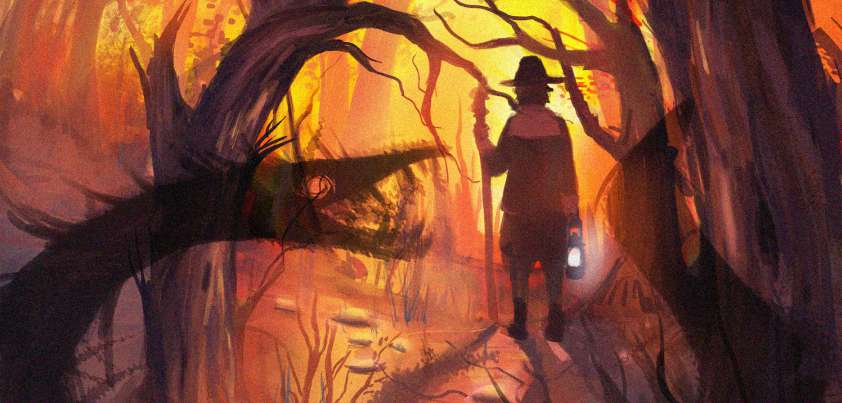 In this story by Nathaniel Hawthorne, a pious young Puritan named Goodman Brown travels into the forest one night to prove that he can resist evil. There he meets a man implied to be the devil, who demonstrates that most of his townspeople, including his wife Faith, embrace witchcraft. Thanks to Brown’s belief in his moral superiority, he accepts everything he sees without question. He fails to appreciate that the visions may have been a dream, contrived by the devil as a way of deceiving him. Themes: temptation (good vs. evil), dreams vs. reality, deceit, paranoia, loss of faith, alienation. More…
In this story by Nathaniel Hawthorne, a pious young Puritan named Goodman Brown travels into the forest one night to prove that he can resist evil. There he meets a man implied to be the devil, who demonstrates that most of his townspeople, including his wife Faith, embrace witchcraft. Thanks to Brown’s belief in his moral superiority, he accepts everything he sees without question. He fails to appreciate that the visions may have been a dream, contrived by the devil as a way of deceiving him. Themes: temptation (good vs. evil), dreams vs. reality, deceit, paranoia, loss of faith, alienation. More…
The Piece of String
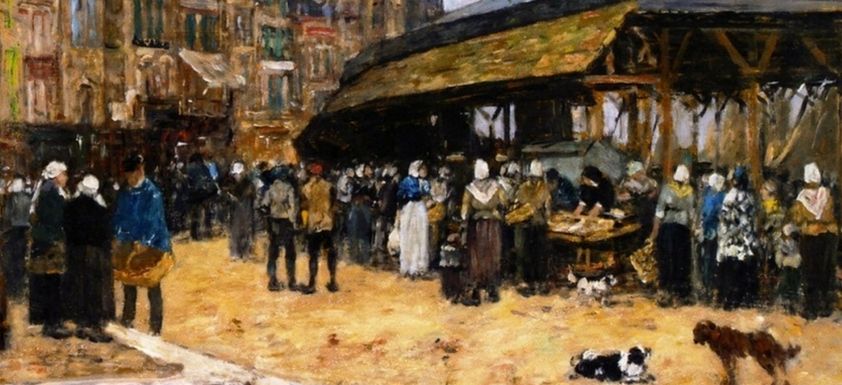 This Guy de Maupassant story involves a frugal farmer whose reputation is forever tarnished after a rival falsely accuses him of finding and failing to return a lost pocketbook. Sadly, he is the victim of a stereotype about “Norman craftiness”. No matter how much he protests that he picked up a piece of string, and even in the face of another peasant coming forward with the pocketbook, nobody will believe him. This weighs so much on the proud man’s mind that he wastes away to an early death. Themes: false accusations, stereotyping, injustice, pride, obsession with image/reputation. More…
This Guy de Maupassant story involves a frugal farmer whose reputation is forever tarnished after a rival falsely accuses him of finding and failing to return a lost pocketbook. Sadly, he is the victim of a stereotype about “Norman craftiness”. No matter how much he protests that he picked up a piece of string, and even in the face of another peasant coming forward with the pocketbook, nobody will believe him. This weighs so much on the proud man’s mind that he wastes away to an early death. Themes: false accusations, stereotyping, injustice, pride, obsession with image/reputation. More…
The Madness of Doctor Montarco
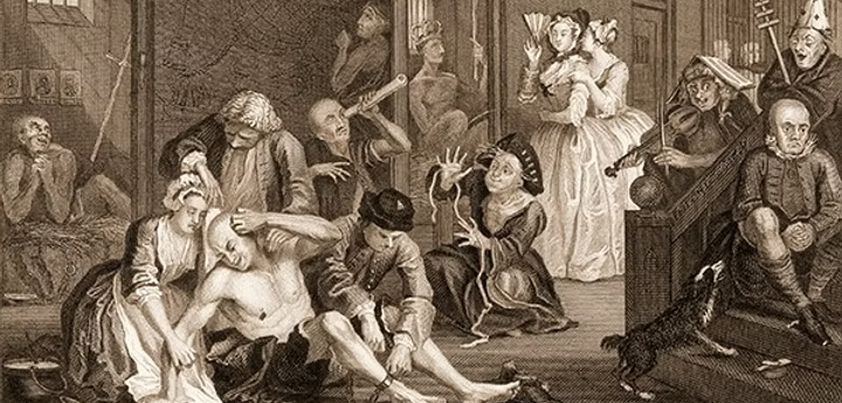 This story by Miguel De Unamuno highlights the danger of defying societal expectations in culturally backward, late 1800s Spain. When a highly respected physician begins to publish increasingly bizarre satirical short stories as a pastime, his patients express concern over his ability to treat them. Despite assurances from another doctor, they desert his practice and question his sanity. Such talk eventually leads to him entering an asylum where he spends the rest of his life a confused, broken man. Themes include individualism, intellectual complacency (of the Spanish masses), duality (logic and practicality vs. fantasy and satire), the nature of madness. More…
This story by Miguel De Unamuno highlights the danger of defying societal expectations in culturally backward, late 1800s Spain. When a highly respected physician begins to publish increasingly bizarre satirical short stories as a pastime, his patients express concern over his ability to treat them. Despite assurances from another doctor, they desert his practice and question his sanity. Such talk eventually leads to him entering an asylum where he spends the rest of his life a confused, broken man. Themes include individualism, intellectual complacency (of the Spanish masses), duality (logic and practicality vs. fantasy and satire), the nature of madness. More…
Snapshots of a Wedding
 Set in the mid-1990s, this story by Bessie Head explores two aspects of a Botswanan wedding. The first is the rituals observed at the event and how, as a “modern wedding”, a lot of the traditional courtesies had been left out of the planning. The second is the circumstances leading up to the wedding, with the author seemingly inviting readers to judge whether the groom, who is rich in cattle and loved and respected by all who knew him, made the right choice for a bride. Themes: tradition vs. modernity, marriage, education, hubris vs. humility, money and status vs. love. More…
Set in the mid-1990s, this story by Bessie Head explores two aspects of a Botswanan wedding. The first is the rituals observed at the event and how, as a “modern wedding”, a lot of the traditional courtesies had been left out of the planning. The second is the circumstances leading up to the wedding, with the author seemingly inviting readers to judge whether the groom, who is rich in cattle and loved and respected by all who knew him, made the right choice for a bride. Themes: tradition vs. modernity, marriage, education, hubris vs. humility, money and status vs. love. More…
In Search of Epifano
 In this story by Rudolfo Anaya, an eighty-year-old woman leaves her loveless marriage and unfulfilling life in California behind to follow her passion (painting) and search for her familial, ethnic and spiritual roots in the Mexican desert. She journeys to the abandoned ranch of her great-grandfather Epifano, who she believes is calling her in her dreams. As she overlooks the ruins of his hacienda, a tall Indian with Epifano’s eyes guides her through an ancient ceremony in which her moan of love is like a new life as a blinding flash fills her body. Themes include heritage, identity, emptiness, epiphany. More…
In this story by Rudolfo Anaya, an eighty-year-old woman leaves her loveless marriage and unfulfilling life in California behind to follow her passion (painting) and search for her familial, ethnic and spiritual roots in the Mexican desert. She journeys to the abandoned ranch of her great-grandfather Epifano, who she believes is calling her in her dreams. As she overlooks the ruins of his hacienda, a tall Indian with Epifano’s eyes guides her through an ancient ceremony in which her moan of love is like a new life as a blinding flash fills her body. Themes include heritage, identity, emptiness, epiphany. More…
Sunanda
 This story by Banaphool opens with a young Indian woman dreaming about what might have been… the power and prestige that comes with a good education. The dream ends with her contemplating revenge on a man who had recently rejected her as a prospective bride. We don’t learn the outcome, because she wakes to the grim reality of her miserable existence. Despite excellent grades at school, her father denied her a tertiary education. As her poverty-stricken family desperately tries to marry her off, she takes drastic action. Themes include poverty, the importance of education, rejection, despair. More…
This story by Banaphool opens with a young Indian woman dreaming about what might have been… the power and prestige that comes with a good education. The dream ends with her contemplating revenge on a man who had recently rejected her as a prospective bride. We don’t learn the outcome, because she wakes to the grim reality of her miserable existence. Despite excellent grades at school, her father denied her a tertiary education. As her poverty-stricken family desperately tries to marry her off, she takes drastic action. Themes include poverty, the importance of education, rejection, despair. More…
Drifting House
 This confronting story by Krys Lee opens in a remote North Korean village created for those the government called the “wavering or hostile class”. Government food rations have been cut off and two starving, malnourished boys abandoned by their mother struggle across a snow-covered mountain to try to join her in China. The older boy carries their dying infant sister. Unable to carry her any further, he humanely ends her suffering. Despite their dire circumstances, he reveres his country’s “Dear Leader”, and expresses hatred for the American imperialists said to be responsible. Themes include family, abandonment, hunger, despair, guilt, indoctrination. More…
This confronting story by Krys Lee opens in a remote North Korean village created for those the government called the “wavering or hostile class”. Government food rations have been cut off and two starving, malnourished boys abandoned by their mother struggle across a snow-covered mountain to try to join her in China. The older boy carries their dying infant sister. Unable to carry her any further, he humanely ends her suffering. Despite their dire circumstances, he reveres his country’s “Dear Leader”, and expresses hatred for the American imperialists said to be responsible. Themes include family, abandonment, hunger, despair, guilt, indoctrination. More…
The Spinoza of Market Street
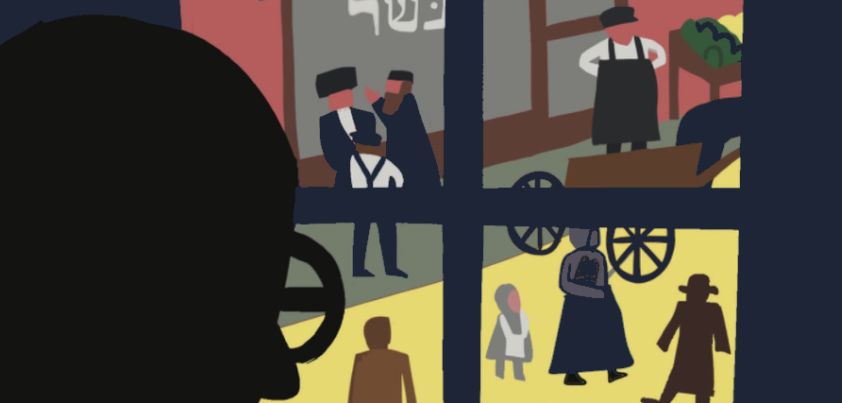 Isaac Singer’s protagonist is an aging philosopher who has struggled for thirty years to write a commentary on the 17th century philosophical treatise, Spinoza’s Ethics. Frustrated, sickly and too weak from hunger to get out of bed, a reclusive spinster nurses him back to health. Her kindness leads to marriage and a wedding night in which he miraculously regains his youthful virility and passion for life. The story’s denouement: Spinoza, forgive me. I have become a fool. could thus be taken several ways. Themes: obsession, isolation and loneliness, renewal through passion, the difficulty in reconciling Spinoza’s views with traditional religion. More…
Isaac Singer’s protagonist is an aging philosopher who has struggled for thirty years to write a commentary on the 17th century philosophical treatise, Spinoza’s Ethics. Frustrated, sickly and too weak from hunger to get out of bed, a reclusive spinster nurses him back to health. Her kindness leads to marriage and a wedding night in which he miraculously regains his youthful virility and passion for life. The story’s denouement: Spinoza, forgive me. I have become a fool. could thus be taken several ways. Themes: obsession, isolation and loneliness, renewal through passion, the difficulty in reconciling Spinoza’s views with traditional religion. More…
Javni
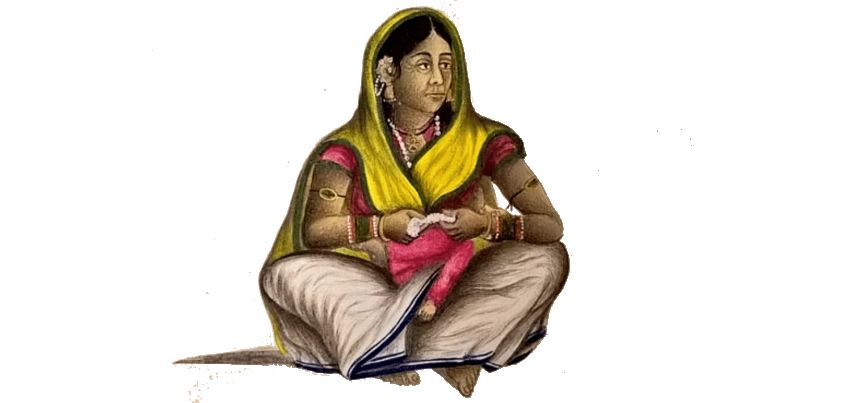 Raja Rao’s Javni highlights the inequity of India’s caste system and how it is so interlinked with religious beliefs that most of those affected accept their lot without question. (A Brahmin is not meant to work. You are the “chosen ones”… you are the twice-born. We are your servants — your slaves.) Javni, a devout servant, accepts the exploitation and indignities suffered at the hands of her employer as a normal aspect of working life. Sadly, being a widow, the poor woman faces even greater cruelty from her family and fellow villagers. Themes: compassion, innocence, religion, fate, superstition, cruelty, sacrifice, love. More…
Raja Rao’s Javni highlights the inequity of India’s caste system and how it is so interlinked with religious beliefs that most of those affected accept their lot without question. (A Brahmin is not meant to work. You are the “chosen ones”… you are the twice-born. We are your servants — your slaves.) Javni, a devout servant, accepts the exploitation and indignities suffered at the hands of her employer as a normal aspect of working life. Sadly, being a widow, the poor woman faces even greater cruelty from her family and fellow villagers. Themes: compassion, innocence, religion, fate, superstition, cruelty, sacrifice, love. More…
No Witchcraft for Sale
 Doris Lessing’s years growing up on a Rhodesian farm add credibility to this story about a condescending white family’s relationship with their native cook who, it seems, doubles as a local medicine man. The closeness that exists between the cook and their young son evaporates as the boy ages and becomes aware of racial issues, but is rekindled when the cook uses “bush medicine” to save the boy’s eyesight. The parents’ gratitude turns to anger as the cook refuses to reveal the secret of the cure to a greedy scientist. Themes: racism, ancient wisdom, altruism vs. commercial exploitation, cultural conflict. More…
Doris Lessing’s years growing up on a Rhodesian farm add credibility to this story about a condescending white family’s relationship with their native cook who, it seems, doubles as a local medicine man. The closeness that exists between the cook and their young son evaporates as the boy ages and becomes aware of racial issues, but is rekindled when the cook uses “bush medicine” to save the boy’s eyesight. The parents’ gratitude turns to anger as the cook refuses to reveal the secret of the cure to a greedy scientist. Themes: racism, ancient wisdom, altruism vs. commercial exploitation, cultural conflict. More…
Home
 This story by Anton Chekhov explores the topic of parent-child communication. A court prosecutor learns that on two occasions his seven-year-old son stole some of his tobacco and was caught smoking. In true prosecutorial style, he does his best to point out the dangers of smoking. However, each time he raises an argument, the boy drifts off on a tangent and changes the subject. Recognizing he isn’t getting through to his son, he abandons logic and successfully communicates the message through a bedtime story. Themes include father-son relationships, punishment vs. discipline, logic vs. imagination, the power of storytelling. More…
This story by Anton Chekhov explores the topic of parent-child communication. A court prosecutor learns that on two occasions his seven-year-old son stole some of his tobacco and was caught smoking. In true prosecutorial style, he does his best to point out the dangers of smoking. However, each time he raises an argument, the boy drifts off on a tangent and changes the subject. Recognizing he isn’t getting through to his son, he abandons logic and successfully communicates the message through a bedtime story. Themes include father-son relationships, punishment vs. discipline, logic vs. imagination, the power of storytelling. More…
The Glass of Milk
 In this story by Manuel Rojas, a boy who has run away to sea finds himself stranded, penniless and hungry in a foreign port. He is too proud to beg for food on the dockside, and too timid to ask in the cheap taverns nearby. Rather than steal food, he decides to order something in a dairy (milk bar), even though he can’t pay for it, and accept the consequences. Instead of punishment, he is met with kindness and compassion. Themes include the lure of the sea, poverty, loneliness and isolation, pride, desperation, shame, honor and kindness. More…
In this story by Manuel Rojas, a boy who has run away to sea finds himself stranded, penniless and hungry in a foreign port. He is too proud to beg for food on the dockside, and too timid to ask in the cheap taverns nearby. Rather than steal food, he decides to order something in a dairy (milk bar), even though he can’t pay for it, and accept the consequences. Instead of punishment, he is met with kindness and compassion. Themes include the lure of the sea, poverty, loneliness and isolation, pride, desperation, shame, honor and kindness. More…
The Coffee-house of Surat
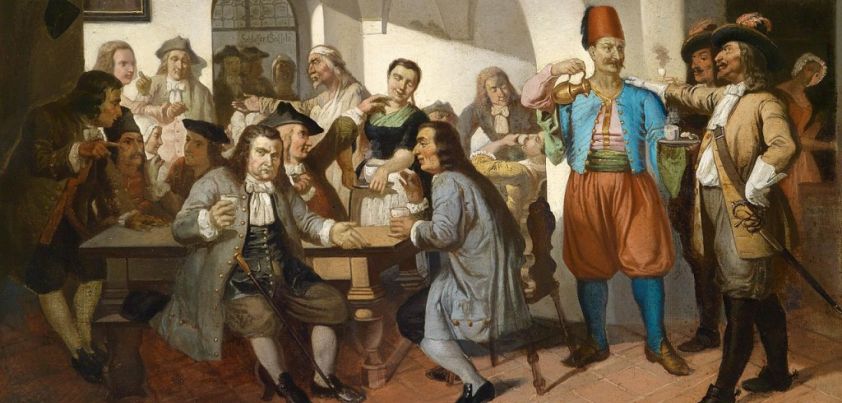 In this story from Leo Tolstoy, customers in an Indian coffeehouse overhear a disillusioned religious scholar questioning his servant about the existence of God. This sparks a debate about which religion is God’s favorite. Arguments are put forward supporting most of the mainstream European and Asian religions of the day, as well as some unusual ones like idolatry and fire-walking. The answer (that God is not exclusive to any one system of beliefs) is provided in an allegorical tale from a Confucian scholar about a debate over the existence and path of the sun. Themes: diversity, bigotry, intolerance, religious pluralism. More…
In this story from Leo Tolstoy, customers in an Indian coffeehouse overhear a disillusioned religious scholar questioning his servant about the existence of God. This sparks a debate about which religion is God’s favorite. Arguments are put forward supporting most of the mainstream European and Asian religions of the day, as well as some unusual ones like idolatry and fire-walking. The answer (that God is not exclusive to any one system of beliefs) is provided in an allegorical tale from a Confucian scholar about a debate over the existence and path of the sun. Themes: diversity, bigotry, intolerance, religious pluralism. More…
Two Words
 In this story by Isabel Allende a young woman has become famous, traveling an unnamed South American country by foot delivering news, storytelling, writing letters for people, and selling “secret” words that have magical powers. One day, a feared bandit/rebel leader forces her to write a motivating political speech to help him become president. On departing, she whispers two words in his ear. The speech is such a success he becomes the favorite to win the election. However, obsessed by the meaning of her two words, he withdraws into himself. Themes include hardship, courage and determination, loneliness, the power of words. More…
In this story by Isabel Allende a young woman has become famous, traveling an unnamed South American country by foot delivering news, storytelling, writing letters for people, and selling “secret” words that have magical powers. One day, a feared bandit/rebel leader forces her to write a motivating political speech to help him become president. On departing, she whispers two words in his ear. The speech is such a success he becomes the favorite to win the election. However, obsessed by the meaning of her two words, he withdraws into himself. Themes include hardship, courage and determination, loneliness, the power of words. More…
The Long-Distance Runner
 This Grace Paley story describes a middle-aged runner’s surreal journey through the now predominantly African American neighborhood in which she grew up. When a thoughtless word leads to screams for help, she shelters for three weeks with the people living in her old family apartment. The story’s major theme is change. While some things are the same (poverty, kindness, motherly love), the world has moved on. The neighborhood has changed (the racial mix, urban decay, a climate of fear), as has the city (‘maleness’, less family unity, drug use). In confronting her past, she learns there is no going back. More…
This Grace Paley story describes a middle-aged runner’s surreal journey through the now predominantly African American neighborhood in which she grew up. When a thoughtless word leads to screams for help, she shelters for three weeks with the people living in her old family apartment. The story’s major theme is change. While some things are the same (poverty, kindness, motherly love), the world has moved on. The neighborhood has changed (the racial mix, urban decay, a climate of fear), as has the city (‘maleness’, less family unity, drug use). In confronting her past, she learns there is no going back. More…
Why Had I Left Home?
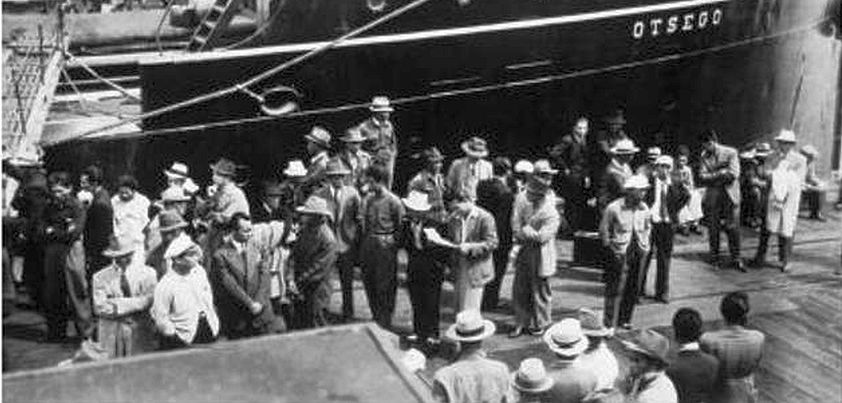 This extract from Carlos Bulosan’s semi-autobiographical novel America Is in the Heart relates how, as a young man, he immigrated to America to start a new life. Upon arrival, he falls victim of a Filipino scammer and earns just $13 for three months’ work in an Alaskan canning factory. Later, he witnesses violence and death in a “Filipino” dance hall, and experiences camaraderie, friendship, and a racist gang attack on an apple farm. He must have asked himself several times: “Why Had I Left Home?” Themes include expectations vs. reality, exploitation, friendship, violence, racism, resilience, perseverance. More…
This extract from Carlos Bulosan’s semi-autobiographical novel America Is in the Heart relates how, as a young man, he immigrated to America to start a new life. Upon arrival, he falls victim of a Filipino scammer and earns just $13 for three months’ work in an Alaskan canning factory. Later, he witnesses violence and death in a “Filipino” dance hall, and experiences camaraderie, friendship, and a racist gang attack on an apple farm. He must have asked himself several times: “Why Had I Left Home?” Themes include expectations vs. reality, exploitation, friendship, violence, racism, resilience, perseverance. More…
African Passions
 This Beatriz Rivera story blends a serious tale about the end of a dysfunctional relationship with the humorous antics of eight Santería gods. The unfortunate woman in the fourteen-year co-habitation is feeling frisky but being ignored. She invokes the gods with the words I want pleasure! And I want it right away!. Later, after her cowardly partner ends things as they drive around trying to bury a cat the gods threw out their ninth story window, she prays: African Powers … help me get over this man! Themes: love, innocence, spirituality, passivity, moving on (Teresa); social class, exploitation, deceit (Armando). More…
This Beatriz Rivera story blends a serious tale about the end of a dysfunctional relationship with the humorous antics of eight Santería gods. The unfortunate woman in the fourteen-year co-habitation is feeling frisky but being ignored. She invokes the gods with the words I want pleasure! And I want it right away!. Later, after her cowardly partner ends things as they drive around trying to bury a cat the gods threw out their ninth story window, she prays: African Powers … help me get over this man! Themes: love, innocence, spirituality, passivity, moving on (Teresa); social class, exploitation, deceit (Armando). More…
Blow-Up
 After a commentary on the role of perspective and the art of storytelling, this Julio Cortázar story goes on to describe how an amateur photographer captures an image that seemingly comes alive, rewriting its narrative. While taking the photograph (of an adolescent boy in an obviously uncomfortable discussion with an adult woman) he comes up with several possible interpretations of what is taking place and what may happen afterwards. Things take a dark turn when he realizes that a man in a nearby car is part of the narrative. Themes include storytelling, narrative perspective, speculation, obsession, artistic imagery vs. reality. More…
After a commentary on the role of perspective and the art of storytelling, this Julio Cortázar story goes on to describe how an amateur photographer captures an image that seemingly comes alive, rewriting its narrative. While taking the photograph (of an adolescent boy in an obviously uncomfortable discussion with an adult woman) he comes up with several possible interpretations of what is taking place and what may happen afterwards. Things take a dark turn when he realizes that a man in a nearby car is part of the narrative. Themes include storytelling, narrative perspective, speculation, obsession, artistic imagery vs. reality. More…
Day of the Butterfly
 The themes of this distressing story from Alice Munro are being different, isolation, bullying, connection and betrayal. Myra’s family looks and dresses differently. At school, her introverted younger brother needs her constant support and protection. The other children in her class (always in groups of course!) ridicule her. For most of them, feigned acceptance comes when Myra is hospitalized with leukemia and it becomes fashionable to be seen to care. Sadly, a brief period of connection with the narrator ends with a decision to discard what may have been Myra’s last ever gift More…
The themes of this distressing story from Alice Munro are being different, isolation, bullying, connection and betrayal. Myra’s family looks and dresses differently. At school, her introverted younger brother needs her constant support and protection. The other children in her class (always in groups of course!) ridicule her. For most of them, feigned acceptance comes when Myra is hospitalized with leukemia and it becomes fashionable to be seen to care. Sadly, a brief period of connection with the narrator ends with a decision to discard what may have been Myra’s last ever gift More…
The Budget
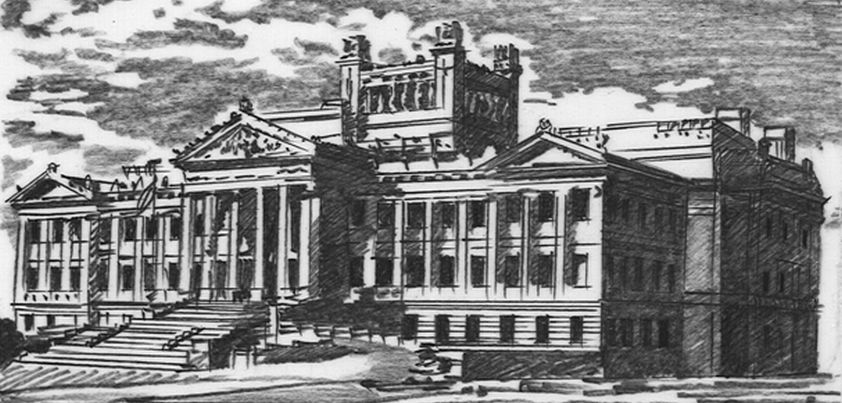 The major theme of this satirical tale by Mario Benedetti is the inefficiency of government bureaucracy and decision-making in 1940s Uruguay. A small government Office, which doesn’t seem to exist for any purpose, has operated within the same annual budget for decades. When its financially struggling staff hear rumours of an imminent budget increase, they go into debt and splurge on luxuries as if a salary increase had already been granted. A year later, as the paperwork weaves its way through the Ministerial approval process, the disillusioned employees are still waiting. Other themes include indolence, hope and disillusionment. More…
The major theme of this satirical tale by Mario Benedetti is the inefficiency of government bureaucracy and decision-making in 1940s Uruguay. A small government Office, which doesn’t seem to exist for any purpose, has operated within the same annual budget for decades. When its financially struggling staff hear rumours of an imminent budget increase, they go into debt and splurge on luxuries as if a salary increase had already been granted. A year later, as the paperwork weaves its way through the Ministerial approval process, the disillusioned employees are still waiting. Other themes include indolence, hope and disillusionment. More…